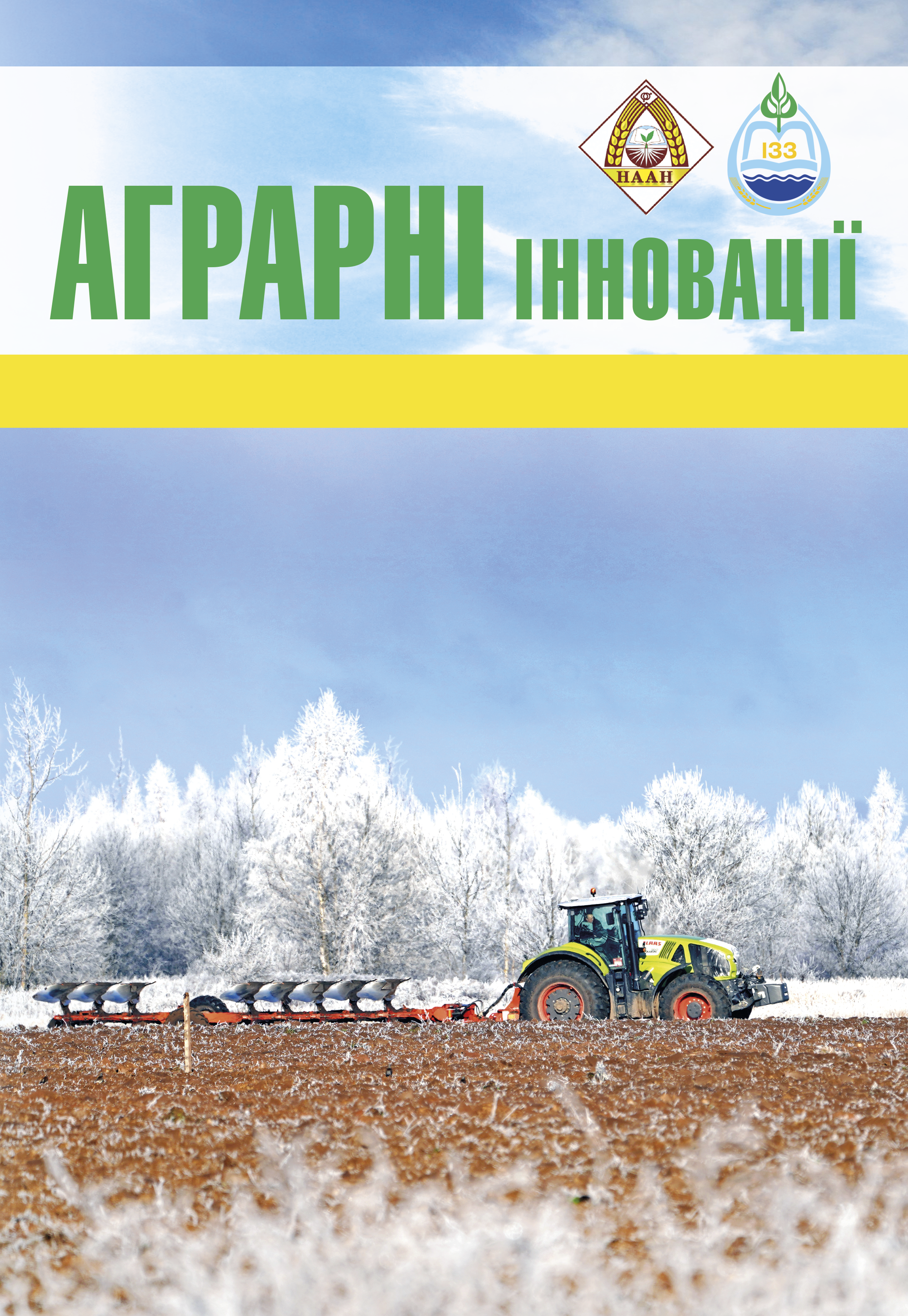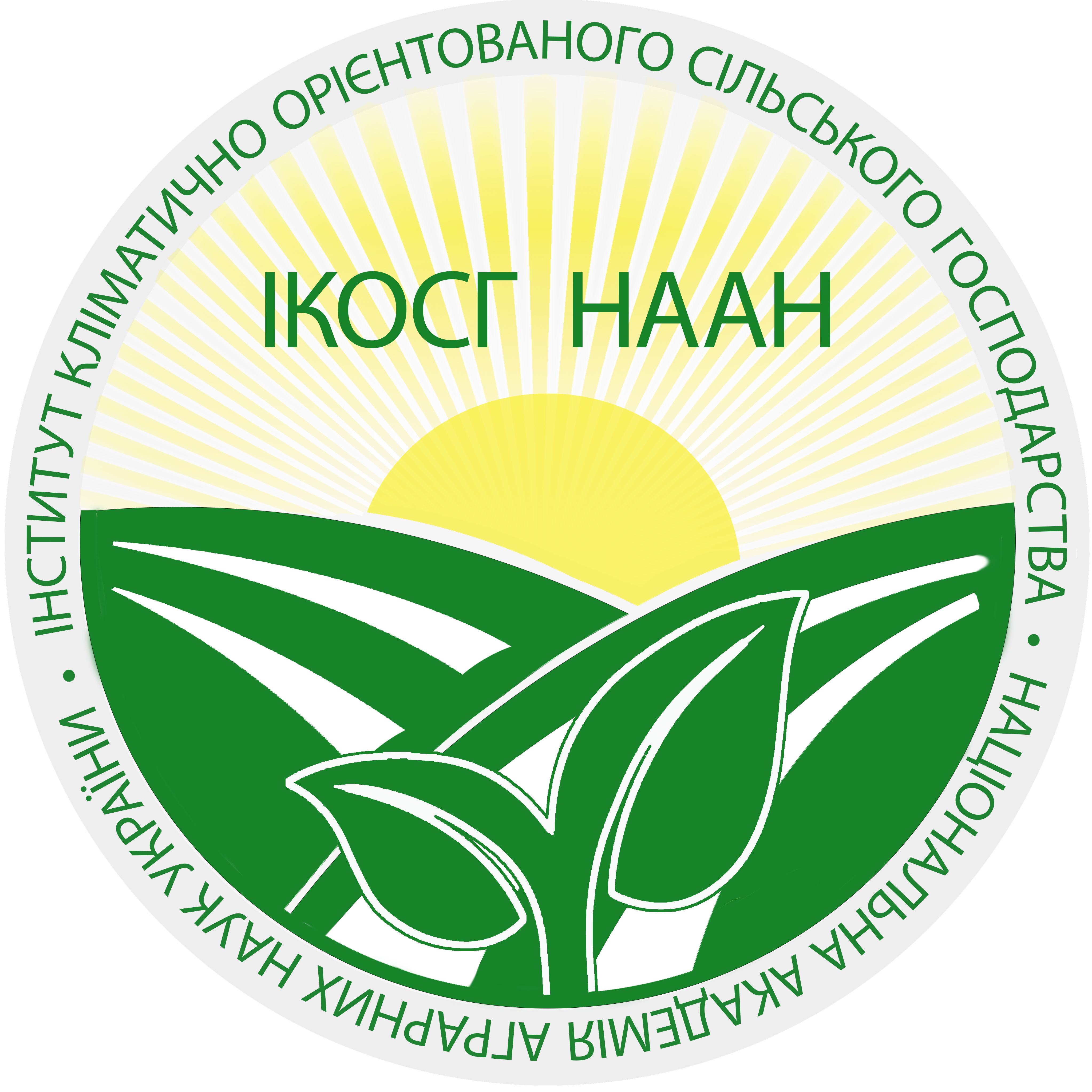Основні фітофаги агроценозів капусти білоголової пізньостиглої в умовах Лісостепу Західного
Анотація
Метою досліджень було провести моніторинг фітосанітарного стану посівів капусти білоголової в умовах західного Лісостепу України та встановити видовий склад домінуючих ентомофагів культури. Матеріали та методика дослідження. Дослідження проводилися протягом 2022–2023 рр. у господарствах Тернопільської, Хмельницької, Чернівецької та Івано-Франківської областей, які спеціалізуються на вирощуванні овочевих культур і в структурі посівних площ яких є капуста білоголова. Починаючи з травня місяця (сівба або висадка розсади пізньостиглої капусти білоголової) і до настання технічної стиглості, проводилися спостереження за появою ентомофагів досліджуваної культури. Чисельність шкодочинних комах фіксувалася відповідно до існуючих методик. Результати. Дослідженнями встановлено, що вирощування капусти білоголової пізньостиглих сортів та гібридів в умовах Лісостепу західного супроводжується значним поширенням її шкідників і цей процес триває протягом всього вегетаційного періоду. В період досліджень найбільшого поширення набули хрестоцвіті блішки (Phyllotreta crusiferae, Goeze), капустяна попелиця (Brevicoryne brassicae L.), білокрилка капустяна (Aleyrodes proletella.), капустяна міль (Plutella maculipennis Curt.), капустяна совка (Mamestra brassicae L), тютюновий трипс (Thrips tabaci Lin.), іспанський слимак (Arion lusitanicus Mabille або Arion vulgaris Moquin-Tandon). Частина із зазначених фітофагів легко контролюється хімічними засобами захисту рослин (хрестоцвіті блішки, попелиці, лускокрилі шкідники – молі, совки), в той же час, таких представників шкодочинної ентомофауни, як білокрилка капустяна, тютюновий трипс та іспанський слимак, можна віднести до важкоконтрольованих. Це створює серйозну загрозу для агроценозів капусти пізньостиглої білоголової. Висновки. Для моніторингу стану посівів капусти білоголової пізньостиглої в західному Лісостепу України протягом періоду вегетації рекомендовано застосування засобів захисту рослин для зменшення чисельності шкідників, використовуючи сучасні системи захисту рослин спрямовані насамперед на підвищення стійкості рослин і створення умов, що обмежують розмноження й шкідливість ентомофагів.
Посилання
2. Євтушенко М.Д., Байдик Г.В., Забродіна І.В. та ін. Сільськогосподарська ентомологія: Назви основних шкідників сільськогосподарських культур і лісових насаджень. Вид. 3. -тє, перероб. і доп. Харків: ФОП Бровін О.В. 2016. 195 с.
3. Євтушенко М.Д., Марютін Ф.М., Туренко В.П. та ін. Фітофармакологія: підручник. Київ: Вища освіта. 2004. 432 с.: іл.
4. Єщенко В.О., Копитко П.Г., Опришко В.П., Костогриз П.В. Основи наукових досліджень в агрономії. Київ: Дія, 2005. 288 с.
5. Клечковський Ю.Е., Глушкова С.О., Палагіна О.В. Трипси – небезпечні шкідники овочевих культур. Карантин і захист рослин. № 7–8 (2019). С. 5-10. Doi: https://doi.org/10.36495/2312-0614.2019.7-8.5-10
6. Колтунов В.А., Романов А.В., Бондаренко В.А. Капустяні овочі. Технологія вирощування і зберігання: монографія. Харків: ФОП Іванченко. 2015. 374 с.
7. Ляшенко А.В. Капустяна попелиця (Brevicoryne Brassicae L.) на посівах капусти Білоголової пізніх строків достигання в Лісостепу України. Захист і карантин рослин. 2014. Вип. 60. С. 211-219.
8. Омелюта В. П., Григорович В., Чабан В. С. Облік шкідників і хвороб сільскогосподарських культур. К.: Урожай, 1986. 296 с.
9. Писаренко В. М., Піщаленко М. А., Поспєлова Г. Д., Горб О. О., Коваленко Н. П., Шерстюк О. Л. Інтегрований захист рослин. Полтава, 2020. – 245 с.
10. Рослинництаво України. Державна служба статистики України. URL: https://www.ukrstat.gov.ua/druk/publicat/kat_u/2022/zb/05/zb_rosl_2021.pdf (дата звернення: 03.01.2024).
11. Сеник І.І., Сидорук Г.П., Шувар А.М. Кормовиробництво Тернопільщини в умовах кліматичних та господарсько-економічних змін. Тернопіль: Вектор. 2023. 180 с.
12. Станкевич С.В., Забродіна І.В., Васильєва Ю.В. та ін. Моніторинг шкідників і хвороб сільськогосподарських культур: навч. посіб. Харків. нац. аграр. ун-т ім. В.В. Докучаєва. Харків: ФОП Бровін О.В., 2020. 624 с.
13. Трибель С.О., Сігарьова Д.Д., Секун М.П., Іващенко О.О. та ін. Методики випробування і застосування пестицидів. Київ: Світ. 2001. 448 с.
14. Germano L. D. L., Picanço M., Jham G. N., Moreira M. D. Bemisia tabaci, Brevicoryne brassicae and Thrips tabaci abundance on Brassica oleracea var. Аcephala. Pesq. agropec. bras., Brasília, v.40, n.3, p.197-202, mar. 2005. РР. 197-202
15. Iheagwam, E.U. (1981) Influence of cabbage Brassica oleracea varieties and temperature on population variables of the cabbage whitefly Aleyrodesbrassicae. OIKOS. 36 (2), 233-237.
16. Kozłowski, J., & Kozłowski, R. (2011). Expansion of the invasive slug species Arion lusitanicus Mabille, 1868 (Gastropoda: Pulmonata: Stylommatophora) and dangers to garden crops. Folia Malacologica, 19, 249–258.
17. Loomans, A.J.M., Staneva, I., Huang, Y., Bukovinskiné-Kiss, G., and van Lenteren, J.C. When native non-target species go indoors: a new challenge to biocontrol of whiteflies in European greenhouses. International Organization for Biological Control. West Palearctic Regional Section Bulletin. 2002. 25(1): 139–142.
18. Pajovic I. 2011, Seasonal dynamics of most detrimental pest insects species on cabbage plants in Montenegro. Agriculture & Forestry. Podgorica. Vol 51. (05) (1-4): РР. 25-42
19. Richter Ellen, Hirthe Unnar. 2014. Hibernation and migration of Aleyrodes proletella in Germany/ Bulletin OEPP/EPPO Bulletin 107:143-149.
20. Walther, G. R., Roques, A., Hulme, et al. (2009). Alien species in a warmer world: risks and opportunities. Trends in Ecology and Evolution, 24, 686–693.






